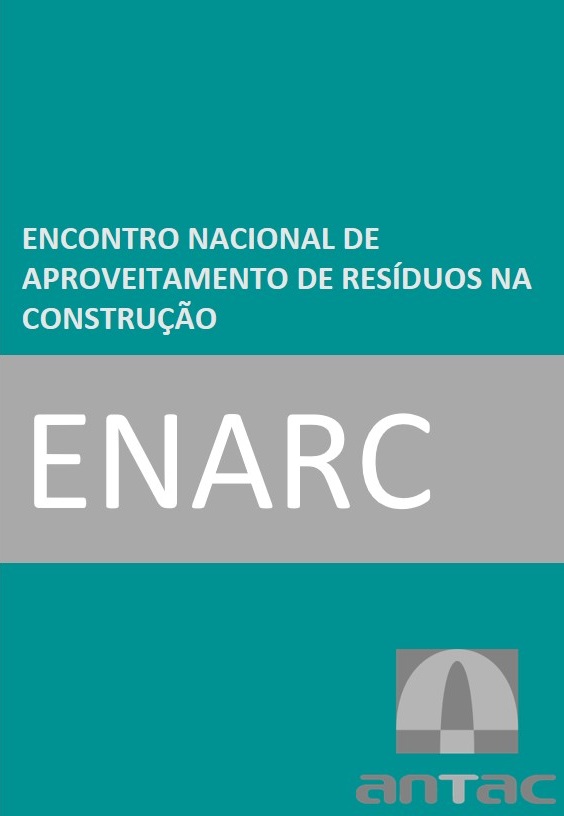Comparative analysis of carbonation in the life cycle and carbonation curing of rendering mortars with the use of biochar for carbon sequestration
DOI:
https://doi.org/10.46421/enarc.v8i00.2997Keywords:
Rendering Mortars, Biochar, Carbonation Curing, Natural carbonationAbstract
The cement industry is responsible for up to 8% of global CO2 emissions. The replacement by more sustainable processes has motivated research into new building materials that can mitigate the effects of global warming. Biochar (biochar) obtained from the pyrolysis of different biomasses is one of these alternative supplementary materials and the use of carbonation, for carbon sequestration, is a recognized technology. The objective of this work is to comparatively evaluate the carbonation in the life cycle and in the carbonic curing of mixed mortars with biochar in the contents of 5% and 20% of cement replacement. Compressive strength tests, capillary absorption, pH chemical indicator and assessment of CO2 capture in the life cycle and through carbonic curing were carried out. Mortars with biochar, carbonated naturally in an internal and accelerated environment, showed an increase in carbon capture and recovery in mechanical strength.
References
ANDRADE, J. J. O., POSSAN E., SQUIAVON J. Z., ORTOLAN T. L. P. Evaluation of mechanical properties and carbonation of mortars produced with construction and demolition waste. Construction and Building Materials, v. 161, p. 70-83, 2018.
ASSOCIAÇÃO BRASILEIRA DE NORMAS TÉCNICAS. ABNT NBR 9779: Argamassa e concreto endurecidos - Determinação da absorção de água por capilaridade. Rio de Janeiro, 2012.
ASSOCIAÇÃO BRASILEIRA DE NORMAS TÉCNICAS. ABNT NBR 13276: Argamassa para assentamento e revestimento de paredes e tetos- Preparo da mistura e determinação do índice de consistência. Rio de Janeiro, 1991.
ASSOCIAÇÃO BRASILEIRA DE NORMAS TÉCNICAS. ABNT NBR 11578: Cimento Portland Composto. Rio de Janeiro, 2005
ASSOCIAÇÃO BRASILEIRA DE NORMAS TÉCNICAS. ABNT NBR 7215: Cimento Portland - Determinação da resistência à compressão de corpos de prova cilíndricos. Rio de Janeiro: ABNT, 2019.
BRE Global Product Category Rule (PCR) For Type III EPD of Construction Products to EN 15804.
CONAB. Boletim da Safra de Grãos – 12º Levantamento, safra 2019-2020. 2020. Disponível em: https://www.conab.gov.br/infoagro/safras/graos/boletim-da-safra-de-graos> Acesso em: 20 janeiro 2023.
GUPTA, S. et al. Factors Determining the Potential of Biochar as a Carbon Capturing and Sequestering Construction Material: Critical Review. Journal of Materials in Civil Enginnering, 2017.
JOHN, V. M. et al. Potencial de mitigação de CO2 de materiais cimentícios na fase de uso. In: XVII ENCONTRO NACIONAL DE TECNOLOGIA DO AMBIENTE.2018
MAZURANA, L. Captura de CO2 em argamassas de revestimento através da carbonatação natural. 2019. Dissertação (Mestrado em Tecnologias Ambientais) - Universidade Tecnológica Federal do Paraná, Medianeira, 2019.
NÉSPOLI, A. A. Carbonatação natural de argamassas mistas para revestimento com uso de terra diatomácea recuperada. 2020. Trabalho de Conclusão de Curso (Bacharelado em Engenharia Civil) - Universidade Federal de Mato Grosso, Cuiabá, 2020.
NEVES JUNIOR, A. Captura de CO2 em materiais cimentícios através de carbonatação acelerada. 2014. Dissertação (Doutorado) – Universidade Federal do Rio de Janeiro, Rio de Janeiro, 2014.
POSSAN, E. et al. CO2 uptake potential due to concrete carbonation: A case study. Case Studies in Construction Materials, v.6. 2017.
RILEM TC 56-MHM CPC-18. Measurement of hardened concrete carbonation depth. Mater Struct. 1988;21:453–5. https ://doi.org/10.1007/BF02472327.
Roadmap Low - Carbon Transition in the Cement Industry. 2021. Disponível em: https://www.iea.org/reports/technology-roadmap-low-carbon-transition-in-the-cement-industry. Acesso em: 19 out. 2022.
SHAO Y., MIRZA MS., WU X. ―CO2 sequestration using calcium–silicate concrete, Canadian Journal of Civil Engineering, n.33, v.6, pp 776-784, 2006.
STANMORE R, GILOT P. Review—calcination and carbonation of limestone during thermal cycling for CO2 sequestration. Fuel Processing Technology, v.86, n.16, pp1707-1743,2005.
CHEN T, ZHAO L, GAO X. Modification of carbonation-cured cement mortar using biochar and its environmental evaluation. Cement and Concrete Composites. V.86, 2022.

